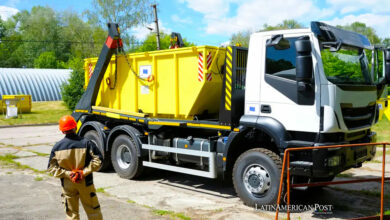Climate change can affect ancient Egyptian treasures
The Environmental office of the United Nations warned on the danger of this threat and assured that the population growth is also a risk for the archaeological sites
UN Environment warned that after “surviving thousands of years of war, invasion, and cannibalization for buildings materials, the splendors of ancient Egypt might finally met their match”. According to the Agency, the increasingly erratic weather (probably linked to climate change) and the increase of the population are affecting iconic sites, such as the Theban Necropolis.
Mostafa Ghaddafi Abdel Rehim, a senior antiquities official in Luxor, told UN Environment that “like all the world, we have a fear of climate change” that is affecting the weather in the country. The researcher explained that “with little rain, low humidity, and piles of swirling desert sand” the Luxor temples are protected like in a bubble. Those pharaohs’ mortuary temples were also known as the “temples of a million years”, but they might didn’t expected a drastically change in the climate conditions.
The temperature
With the hot temperatures that are affecting the country, the excavation days have had to be cut short due to the overheating workers in the digging trenches. This is affecting the time of the archaeological activities and can also increase the budget.
This also affects the conditions how the archaeologist document the hieroglyph-dotted walls. “We used to make blueprints using natural sunlight, but starting about 20 years ago, we found it harder and harder to burn the image onto the paper”, explained Ray Johnson, director of the University of Chicago’s Epigraphic Survey, an institution that had worked in the Madinat Habu temple for 100 years.
The heat also affected the color of the walls of the gargantuan New and Middle Kingdom complex in the northern approach to Luxor. The bright of the sun robbed most of the walls of their color. Also, some inscriptions in the Elephantine island (in the mid Nile) had disappeared.
Meanwhile, in Aswan, hours away from the south of Luxor, the temperatures over 40 C are “slowly cracking many of the rose granite structures. The granite expands in the daytime sun, and then contracts overnight in the cooler air. It gets rounder and rounder, until it eventually breaks” explained Johanna Sigl of Cairo’s German Archaeological Institute.
The UN assured that these climate change effects will only get worse, possibly requiring some tricky decisions about the viability of maintaining vulnerable historic sites.
If the Summer heat is affecting the panorama, winter is not helping
If the Summer heat is affecting the panorama, winter is not helping. Increasingly frequent down pours are savaging ancient mud brick buildings, which only lasted so long because of limited rain.
The increase of the population
Climate change is not the only enemy of the temples. According to UN Environment, the construction of the Aswan High Dam, the annual flood ended, which eliminated the “cleanse” that usually clear the salt from the topsoil and it is eating the stone.
Also, with the growth in the population, the fields around the temples that usually stay dry are now under the constant cultivation, which raises the water table thought the East and West Banks and are swapping the foundations with “far more water than they were designed to handle”.
Latin American Post | Santiago Gómez Hernández
Copy edited by Laura Rocha Rueda






